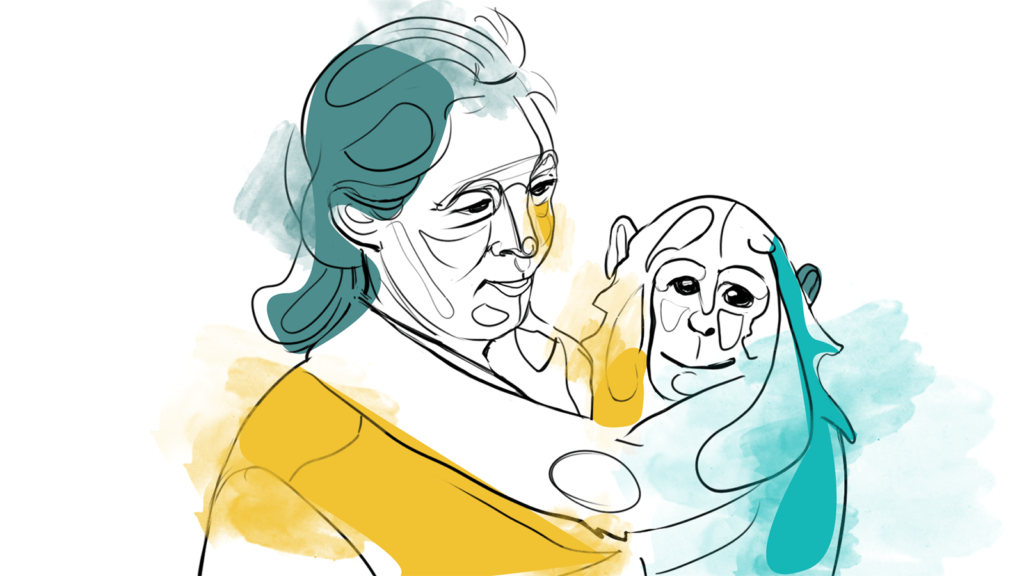
What is Blockchain?
Blockchain, the buzzword of the tech world that seems to have everyone talking. But what exactly is it? Picture a digital ledger that securely records transactions in a way that is transparent, decentralized, and tamper-proof. It’s like a digital notary that ensures trust in all kinds of online dealings without the need for a middleman. As tech mogul Don Tapscott put it, “The blockchain is an incorruptible digital ledger of economic transactions that can be programmed to record not just financial transactions but virtually everything of value.”
So, how does this mystical blockchain actually work its magic? Well, imagine a chain of blocks (hence the name) where each block contains data and is connected to the one before it. But here’s the kicker – once a block is added to the chain, it cannot be altered. It’s as if each block is sealed with a digital lock that requires validation from multiple parties before any changes can be made. As author William Mougayar so eloquently described it, “Blockchain is the tech. Bitcoin is merely the first mainstream manifestation of its potential.” And that’s just the tip of the iceberg when it comes to unraveling the mystery of blockchain.
The History of Blockchain Technology
Ah, the tangled web of blockchain technology – a digital labyrinth with a history as intriguing and complex as a season finale cliffhanger. Picture this: it’s 2008, and an enigmatic figure who goes by the name of Satoshi Nakamoto unveils the concept of blockchain in a whitepaper. Cue the curiosity and head-scratching in the tech world, as people try to wrap their minds around this new cryptographic innovation that promises to revolutionize the way we think about trust and security in the digital realm.
Fast forward to 2009, and voila! The first-ever cryptocurrency, Bitcoin, is born, riding on the coattails of blockchain technology. As tech pioneer Marc Andreessen puts it, “Bitcoin is a remarkable cryptographic achievement, and the ability to create something that is not duplicable in the digital world has enormous value.†And just like that, the stage is set for blockchain to strut its stuff and make a splash in the turbulent waters of the digital landscape, with its decentralized nature and immutable ledger paving the way for a new era of secure transactions and data management.
As we dive deeper into the annals of blockchain history, we uncover a tapestry woven with threads of innovation, skepticism, and occasional eyebrow-raising scandals. From the murky origins of Satoshi Nakamoto to the rollercoaster ride of cryptocurrency prices, the journey of blockchain technology is a wild ride of twists and turns that keeps us on the edge of our seats, wondering what’s next in this digital adventure. So grab your popcorn, folks, because the story of blockchain is far from over – and the plot thickens with each passing chapter.
How Does Blockchain Work?
Blockchain is the magical web that makes the digital world go ‘round. Picture a giant ledger that’s online and eternal, recording every transaction with unbreakable security. It’s like the ultimate spy agency but for data, keeping tabs on every digital move you make. As each block of data gets added to the chain, it’s stamped with a digital fingerprint that’s as unique as your pinky toe. And just like a juicy secret, once it’s locked in, there’s no changing it.
So, how does this techno-wizardry actually happen? Well, let’s break it down like a complex math problem you actually want to solve. Imagine a network of computers (a digital tribe, if you will) all linked up and working together to validate and record each transaction. It’s like a digital democracy, where the majority rules. To mess with it would be like trying to win an argument against a unanimous jury – good luck with that! And just to sweeten the pot, each time a transaction is verified and added to the chain, a digital gold coin (AKA cryptocurrency) is doled out in a frenzy of cyber-excitement. It’s like getting a virtual high five from the digital universe.
Benefits of Blockchain Beyond Bitcoin
Blockchain technology, often associated solely with cryptocurrencies like Bitcoin, offers a plethora of benefits beyond just digital coins. Imagine a world where transparency reigns supreme, where fraud is a thing of the past, and where trust is the currency that truly matters. That’s the power of blockchain at play, revolutionizing industries far and wide.
From supply chain management to healthcare records, blockchain’s decentralized and immutable nature provides a secure platform for data sharing and verification. As the tech guru Naval Ravikant puts it, “Blockchain is the tech. Bitcoin is merely the first mainstream manifestation of its potential.” Embracing blockchain means embracing a future where middlemen are passé, efficiency is king, and innovation knows no bounds. So, hop on this digital bandwagon, my friends, for the ride promises to be anything but dull.
Different Types of Blockchain
When it comes to blockchain, it’s not a one-size-fits-all situation. Just like how we all have our own flavor preferences—some love a sweet treat, while others crave the savory—I like to think of blockchain as a buffet of options.
First up, we’ve got the public blockchain. It’s like that friend who wears their heart on their sleeve, putting everything out there for all to see. Transparency is the name of the game here, with transactions visible to anyone who cares to look. On the other hand, we have the private blockchain, the mysterious counterpart who keeps things close to the chest. Think of it as your own secret club where only invited members get the inside scoop. Each type brings its own flair to the table, catering to different needs and preferences in the digital realm.
Moving along the blockchain buffet line, we have the consortium blockchain. This one’s like a potluck dinner—everyone chips in a dish to share, creating a collaborative environment. It’s all about teamwork and shared responsibilities in this type of blockchain, making it a popular choice for businesses looking to work together towards a common goal. And let’s not forget about the hybrid blockchain, the versatile option that combines the best of both worlds. It’s the ultimate fusion of public and private elements, offering flexibility and adaptability for those who refuse to be boxed in by traditional boundaries.
Real-World Applications of Blockchain
Blockchain technology isn’t just a buzzword associated with cryptocurrency anymore. It has permeated into various real-world applications, proving its versatility and potential impact. From supply chain management to healthcare records, the possibilities seem endless.
One of the most intriguing applications of blockchain is in the art world. As the saying goes, “Art is the most intense mode of individualism that the world has known.” The transparency and security offered by blockchain can revolutionize how we authenticate and trace the provenance of artworks, combating issues related to fraud and theft. Imagine a world where every brushstroke of a masterpiece is securely recorded on the blockchain, preserving its uniqueness for generations to come.
Challenges Facing the Blockchain Industry
When it comes to the world of blockchain, challenges seem to be as common as coffee in the mornings. From scalability issues to regulatory hurdles, the industry is a rollercoaster of obstacles waiting to be conquered. Once you dip your toes into the world of blockchain, you quickly realize that it’s not all sunshine and rainbows. As the great Benjamin Franklin once said, “By failing to prepare, you are preparing to fail.” And that definitely holds true for the challenges facing the blockchain industry.
One of the biggest hurdles facing blockchain is the issue of scalability. As the technology gains more mainstream attention and adoption, the question of whether it can handle the increasing volume of transactions becomes ever more pressing. It’s like trying to fit a whale into a goldfish bowl – it just doesn’t work! And as our good friend Albert Einstein famously quipped, “The measure of intelligence is the ability to change.” So, the blockchain industry needs to keep evolving and finding solutions to scale effectively.
The Future of Blockchain Technology
The future of blockchain technology is a tantalizing playground of possibilities, akin to a futuristic utopia where data reigns supreme and trust is no longer a prerequisite, but a default setting. As we navigate the uncharted waters of this digital revolution, it’s hard not to be swept away by the wave of excitement and curiosity that propels us forward into a realm where the concept of ownership is redefined, and transparency becomes the norm.
Imagine a world where transactions are seamlessly executed with the click of a button, where security is not an afterthought but a fundamental feature embedded in every aspect of our digital interactions. As we delve deeper into the rabbit hole of blockchain technology, we are greeted with a vision of efficiency and decentralization that promises to disrupt industries far and wide, from finance to healthcare, and beyond. With the potential to revolutionize the way we conduct business and interact with one another, blockchain technology stands poised on the brink of a major paradigm shift that will undoubtedly shape the way future generations perceive the digital landscape.
Blockchain in Finance and Banking
As the world hurtles into an era of digital transformation, the financial landscape is undergoing a seismic shift with the advent of blockchain technology. This revolutionary system promises to upend traditional banking practices with its decentralized and secure nature. In the words of Marc Benioff, the co-founder of Salesforce, “Blockchain is a remarkably transparent and decentralized technology – and inherently designed to eliminate the need for trust in data.”
Through the lens of finance and banking, blockchain acts as a catalyst for efficiency and transparency, transforming the way transactions are conducted. Gone are the days of lengthy processing times and exorbitant fees; blockchain offers near-instantaneous transactions at a fraction of the cost. As Don Tapscott, the CEO of The Tapscott Group, aptly puts it, “Blockchain represents nothing less than the second era of the internet.” The promise of this technology is as vast as the digital frontier itself, offering a glimpse into a future where trust is embedded in the very fabric of financial interactions.


